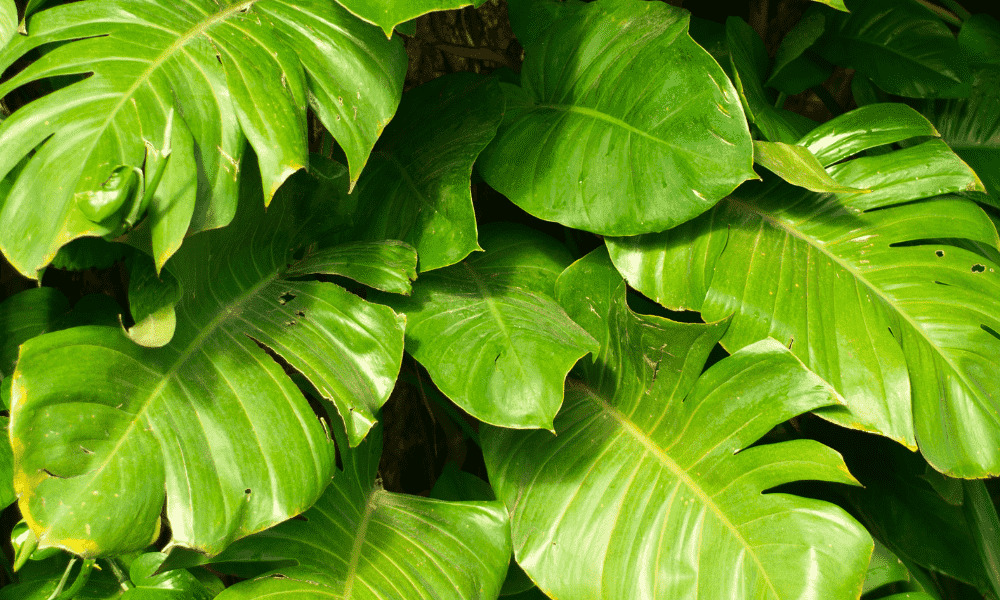The bridal veil plant (Gibasis pellucida or Tradescantia geniculata) is a stunning perennial-flowering houseplant that boasts dark leaves and delicate white flowers. The cascading foliage and white buds resemble a bridal veil, giving the plant its name. This guide will provide you with all the information you need to grow and care for this beautiful plant effortlessly.
Bridal Veil Care: The Essentials
Growing a bridal veil plant requires minimal effort if you follow these main care guidelines:
Light: Indirect sunlight is ideal.
Soil: Well-drained soil high in organic matter.
Water: Only when the top two inches of soil feel dry.
Temperature: Maintain temperatures between 55-75 degrees Fahrenheit.
Light Requirements
The bridal veil plant thrives in filtered, indirect sunlight. This type of lighting helps the leaves and stems deepen to their characteristic green and purple hues. To enhance these colors, you can increase the light exposure, but be cautious to avoid direct sunlight, which can burn the leaves and cause them to turn brown.
Soil Requirements
Bridal veil plants have simple soil needs. The soil should be well-drained and rich in organic matter such as coco coir, perlite, or vermiculite. This ensures proper aeration and prevents water from sitting around the roots, which can cause rot.
Watering Schedule
Water your bridal veil plant once or twice a week, or whenever the top inch or two of soil feels dry. Overwatering is a common mistake that can lead to root rot, so it’s crucial to let the soil dry out between waterings.
Temperature & Humidity
These plants are quite adaptable when it comes to humidity, requiring no special levels. They grow best in temperatures between 55-75 degrees Fahrenheit. However, keep them away from AC units or cold drafts to prevent dehydration.
Fertilizing Your Bridal Veil Plant
One of the reasons bridal veil plants are so low-maintenance is that they do not require regular fertilization. Instead, maintaining high levels of organic matter in the soil with a monthly treatment is sufficient.
Pruning
The best time to prune your bridal veil plant is during the spring and summer when it is actively growing. However, if necessary, you can also prune in the dormant seasons of fall and winter. Trim the branch tips and remove any dead wood down to the ground level to encourage new growth.
Propagating Bridal Veil Plants
Propagation is a great way to increase your indoor foliage and maintain the purity of the plant variety. Here’s how to propagate your bridal veil plant:
Materials Needed:
- Sharp pruning shears
- Water
Steps:
1. Cutting: Cut a 2-4 inch healthy stem from the original plant using pruning shears in early spring.
2. Preparing the Cutting: Remove some leaves from the stem’s lower portion by carefully pinching them off.
3. Maintaining the Cutting: Place the cut end in water, ensuring the top portion remains above water. Change the water weekly until roots form.
4. Planting: Once roots develop, plant the cutting in well-drained soil with high organic content.
Potting & Repotting
Repotting should only be done if the plant has doubled in size within a year or if roots start growing out of the drainage holes. When repotting, choose a pot with at least one drainage hole to ensure proper water flow.
Common Pests & Plant Diseases
While bridal veil plants are generally hardy, they can be susceptible to common pests like spider mites, mealybugs, and other insects. Remove these pests with insecticidal soap or a water mist. Root rot is another concern, usually caused by overwatering. Ensure proper drainage and avoid waterlogging the soil to prevent this issue.
Encouraging Blooms
To encourage your bridal veil plant to bloom, provide it with indirect sunlight. The flowers typically bloom from May to August, lasting about 10 days to two weeks. Regular pruning after a growth period in the spring can also stimulate more blooms.
Caring for Blooming Plants
Once your bridal veil plant starts blooming, care for it as you normally would. Keep it out of direct sunlight to prevent scorching of the flowers and leaves. Maintain regular watering and avoid over-fertilizing.
Troubleshooting Common Problems
Root Rot: Identifiable by dark roots and yellow or splotchy leaves, root rot is mainly caused by overwatering. To fix this, snip off any mushy roots and let the remaining roots dry completely before repotting. Stick to a healthy watering schedule afterward.
Pest Infestations: Regularly inspect your plant for pests. Use insecticidal soap or water mist to remove them.
Frequently Asked Questions
Do bridal veil plants prefer sun or shade?
Bridal veil plants thrive in indirect or filtered sunlight. Direct sunlight can burn the leaves, so it’s best to keep them in partial shade.
Are bridal veil plants indoors or outdoor plants?
Bridal veil plants are primarily indoor houseplants but can be grown outdoors in the right conditions, such as in well-drained soil and out of direct sunlight.
Are bridal veil plants perennials?
Yes, bridal veil plants are perennials, meaning they will continue to grow year after year with proper care.
What do bridal veil plant flowers look and smell like?
The plant produces dark green leaves, purple stems, and dainty white flowers that emit a sweet honey smell when they bloom.
Conclusion
The bridal veil plant is an excellent choice for anyone looking for a beautiful, low-maintenance houseplant. With proper care, including indirect sunlight, well-drained soil, and appropriate watering, this plant can thrive and add a touch of elegance to any indoor space. Remember to watch for pests and avoid overwatering to keep your bridal veil plant healthy and vibrant.



